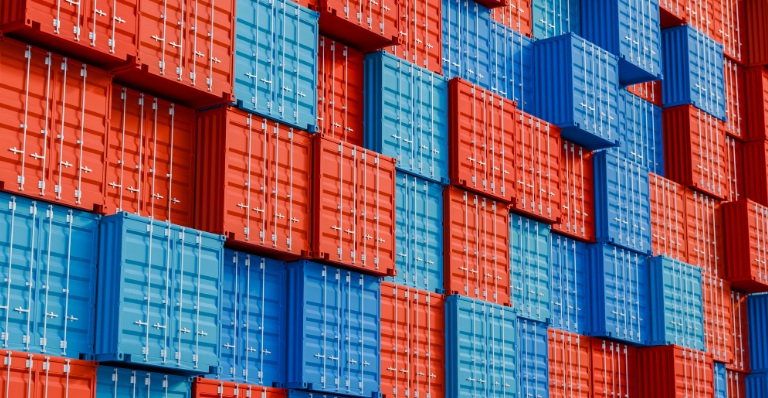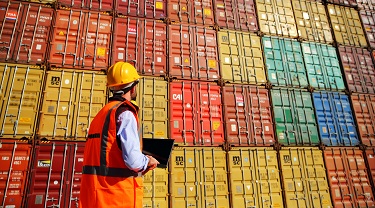The Russian invasion of Ukraine has threatened global fuel security and set in motion a series of events that raise questions around existing supply lines. For Europe, these questions are all the more acute given its reliance on Russian energy imports and the increasing risk that gas rationing this coming winter could tip the continent into recession.
Talk of a so-called Marshall Plan for European energy security has buoyed prospects from Oslo to Tehran. But as one of the world’s most resource-rich countries, is there a role for Canada to play in helping Europe transition away from Russian fossil fuels?
Russia accounts for 40% of the European Union’s (EU) gas consumption and more than a quarter of its crude oil imports. At a country level, the Netherlands, Germany, and Poland are the largest importers of crude oil from Russia, while Germany, Turkey, Italy, and France rank as Russia’s top natural gas customers. Fears of supply constraints and surging energy prices are already forcing European businesses and households to cut energy use. Plans around fuel rationing was a key factor that led EDC Economics to downgrade its Euro area growth forecast, in our summer Global Economic Outlook.
As the world’s fourth-largest oil producer and fifth-largest gas producer, Canada pledged in March to boost its oil and gas exports by up to 200,000 barrels per day (b/d) and 16,000 cubic metres per day (cm/d), respectively. However, with Europe importing 2.2 million b/d of oil and 420 million cm/d of gas from Russia, such an amount would only make up a fraction of the deficit.
In the short term, Canada’s ability to fill the gap is limited, with Canadian producers already producing at near-capacity. It would take several years and billions of dollars of investment to add production, at a time when many companies are under pressure to show increased capital discipline and help reduce carbon emissions. Volatile asset prices, in the context of central bank efforts to soak up excess liquidity only adds to the uncertainty.
And even if we could ramp up production, our ability to export that additional capacity remains constrained by our export infrastructure. Canada’s current energy export infrastructure is almost entirely geared toward the U.S. due to the location of supply basins and demand centres, the integration of our transportation networks as well as existing Canada-U.S. trade agreements.
You should also check out
With growing risks, Canadian companies face new challenges. EDC’s Global Economic Outlook offers insights to help you make better business decisions.
In the absence of a trans-Canadian pipeline, shipping Western Canadian oil to Europe would mean transporting oil to the Gulf Coast through pipelines or by rail, before loading it onto tankers and shipping it across the Atlantic. Similarly, for natural gas, exporting to Europe would require either shipping through the U.S., at a great cost, or selling to the U.S. market at a lower price, to allow additional U.S. supplies to be exported to Europe.
In the medium term, there may be opportunities for Canada to export more oil from Newfoundland and Labrador to Europe, while also keeping with our climate commitments. Three ongoing oil projects on the East Coast are expected to add an additional 292,000 b/d of capacity by 2028. The offshore projects have a price advantage over Western Canadian Select, as well as a lower breakeven price. Additionally, oil production out of Newfoundland and Labrador has lower average emissions compared to the offshore international average.
On the natural gas side, supplying Europe would require investment in LNG facilities along the East Coast, for the liquification of natural gas to be shipped overseas. This would take time and money, as well as assurances of long-term purchasing agreements. It might also require designing the new terminals to handle green hydrogen, helping to build a bridge to a future where we export hydrogen in the form of ammonia.
The bottom line?
In the short term, Canada’s capacity to provide any additional oil and gas to Europe is limited by both our export infrastructure and production capacity. There are opportunities for Canada to provide more oil and gas to Europe over the medium term, but this would require the right investment and would, even then, likely be limited compared to swing producers, like OPEC+ and the U.S.
This week, a very special thanks to Zhenzhen Ye, a country risk analyst in our Economic and Political Intelligence Centre.
This topic for this commentary comes from Don Henry of SeedMaster in Emerald Park, Sask.
As always, at EDC Economics, we value your feedback. If you have ideas for topics that you would like us to explore, please email us at economics@edc.ca and we’ll do our best to cover them.
This commentary is presented for informational purposes only. It’s not intended to be a comprehensive or detailed statement on any subject and no representations or warranties, express or implied, are made as to its accuracy, timeliness or completeness. Nothing in this commentary is intended to provide financial, legal, accounting or tax advice nor should it be relied upon. EDC nor the author is liable whatsoever for any loss or damage caused by, or resulting from, any use of or any inaccuracies, errors or omissions in the information provided.





